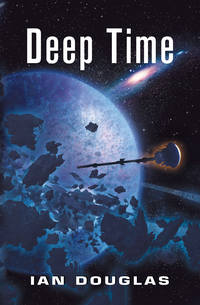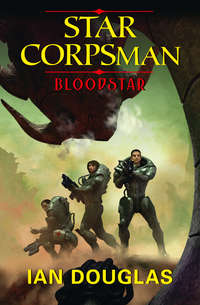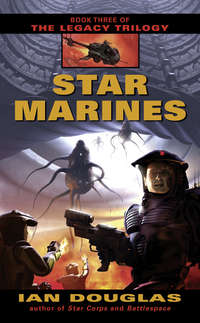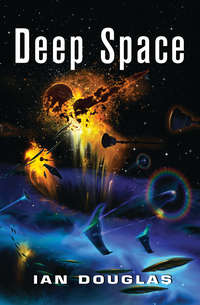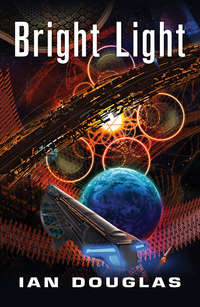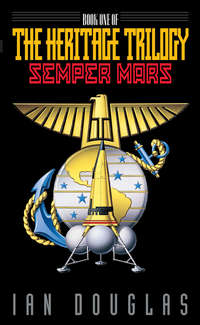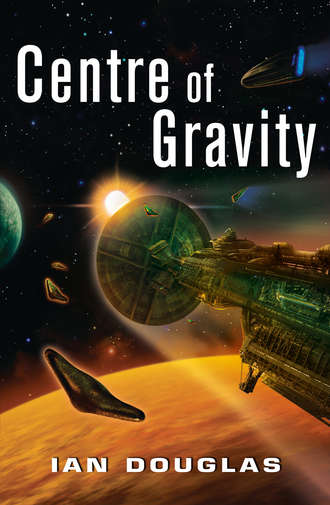
Полная версия
Centre of Gravity

Vermin …
The All of Us race was unaccustomed to dealing with other sentient species. One of the primary reasons for this was, simply, their size; by almost any standards, the H’rulka were giants.
An adult H’rulka consisted of a floatation gas bag measuring anywhere from two to three hundred meters across, with brain, locomotion and feeding organs, sensory apparatus and manipulators clustered at the bottom. Most other sentient species with which they’d had direct experience possessed roughly the same size and mass ratio to a H’rulka as an ant compared to a human.
When the H’rulka thought of other life forms as “vermin,” the thought was less insult than it was a statement of fact, at least as they perceived it. Within the complex biosphere of the H’rulka homeworld, there were parasites living on each All of Us colony that were some meters across. H’rulka simply found it difficult to imagine creatures as intelligent that were almost literally beneath their notice in terms of scale.
“Commence acceleration,” Ordered Ascent directed. “We will move into the region of heavy radio transmission, and destroy targets of opportunity as they present themselves.”
The H’rulka warship, more than twenty kilometers across, began falling toward Sol, the inner system, and Earth.
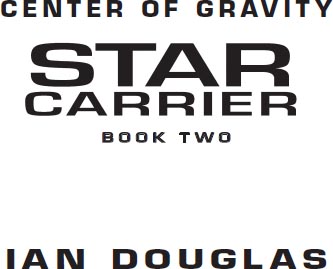

To Brea, my guiding star
Table of Contents
Vermin …
Title Page
Dedication
Prologue
Chapter One
Chapter Two
Chapter Three
Chapter Four
Chapter Five
Chapter Six
Chapter Seven
Chapter Eight
Chapter Nine
Chapter Ten
Chapter Eleven
Chapter Twelve
Chapter Thirteen
Chapter Fourteen
Chapter Fifteen
Chapter Sixteen
Chapter Seventeen
Chapter Eighteen
Chapter Nineteen
Chapter Twenty
Chapter Twenty-One
Chapter Twenty-Two
Chapter Twenty-Three
Chapter Twenty-Four
Chapter Twenty-Five
Chapter Twenty-Six
Epilogue
By Ian Douglas
Copyright
About the Publisher
Prologue
12 December 2404
Emergence, Arcturus System
36.7 light years from Earth
0310 hours, TFT
The recon probe emerged from its Alcubierre bubble of tightly warped space, bleeding off excess velocity in a burst of high-energy photons. An artificial gravitational singularity the size of a small dust particle and as massive as a star flicked on and off a few meters beyond the craft’s bulbous nose, dragging it forward with an acceleration of nearly five thousand standard gravities. At that rate, the craft would be crowding the speed of light within another one hundred minutes.
Only slightly larger than a VG–10 Krait smart missile, the ISVR–120 probe was too small to carry sentient organics; its pilot was a Gödel 2500 artificial intelligence packed into the solid-state circuitry that filled the pod’s core and so, technically, could be said to take up no space at all. Certainly it needed none of the bulky life-support equipment necessary for organic life.
The AI was called Alan, named after Alan Turing, one of the giants in the development of the first computers four and a half centuries earlier.
Within seconds of the probe craft’s emergence from the warp bubble, Alan had scanned the system ahead, a volume of space dominated by a single bloated and brilliant orange star. The Confederation Naval Standard Ephemeris entry on the star resided within Alan’s surface memory.
STAR: Alpha Boötis
COORDINATES: RA: 14h 15m 39.7s Dec: +19˚ 10’ 56” D 11.24p
ALTERNATE NAMES: Arcturus, Alramech, Abramech, 16 Boötes
TYPE: K1.5IIIFe–0.5
MASS: 3.5 Sol; RADIUS: 25.7 Sol; LUMINOSITY: 210 Sol (Optical 113 Sol)
SURFACE TEMPERATURE: ~4300oK
AGE: 9.7 billion years
APPARENT MAGNITUDE (SOL): –0.04; ABSOLUTE MAGNITUDE: –0.29
DISTANCE FROM SOL: 36.7 LY
PLANETARY SYSTEM: 6 planets, including 1 Jovian and 5 sub-Jovian gas giants, plus 47 dwarf planets and 65 known satellites, plus numerous planetoids and cometary bodies.
One gas giant satellite, Jasper, is of interest with somewhat earthlike conditions due to gravitational/tidal effects. …
Arcturus, depending on how one measured such things, was the third or fourth brightest star in the night skies of Earth, a bright orange point at the base of the kite-shape of the constellation Boötis. From Alan’s emergence point some eighteen astronomical units out, Arcturus was a dazzling gold-orange beacon 113 times brighter than Sol would have been at the same distance. At infrared wavelengths, Arcturus was even brighter, flooding ambient space with sullen heat.
Alan’s primary objective lay almost directly beyond the star from his emergence point. His final approach would be masked by the star’s glare … if everything went right.
By the time Alan had traveled a third of the distance toward Arcturus—some 900 million kilometers—he was moving at a hair better than 99 percent of the speed of light. Velocity transformed his view of the surrounding universe, compressing it into a circle of light dead ahead—most of it infrared light from Arcturus, blue-shifted into optical wavelengths. The AI’s sensory correction program, however, was able to untangle the flood of speed-distorted light into its separate components and correct for the distortion. His velocity also distorted time, by seven to one at this velocity. Each passing minute for Alan was seven in the universe outside; it created the illusion that he was hurtling deeper into the Arcturus system much faster than he actually was.
Some two hundred minutes objective after entering the Arcturus system, Alan passed the star, skimming the giant’s photosphere. The probe’s electromagnetic shielding deflected the worst of ionizing radiation but had little effect on radiant heat. Briefly, the probe’s hull struggled with temperatures approaching 900 degrees Celsius. Nanotechnic currents within the hull laminates helped distribute the heat, radiating much of it harmlessly astern.
And then the star—its monstrous, turbulent, and roiling girth nearly twenty-six times larger than Sol’s—fell away behind, red-shifting abruptly to a near-invisibility, illuminated at optical wavelengths solely by red-shifted X-rays.
Alan’s objective now lay directly ahead, 20 astronomical units out.
Long-range detectors were already picking up ships, enemy ships, though at this distance those images were more than two and a half hours old. As expected, most of the enemy targets were grouped closely around a Jupiter-sized gas giant, listed in the database as Alchameth, and its Earth-sized moon, Jasper. Orbiting the moon was Arcturus Station, a terraforming base established by the Confederation three years ago to begin the process of turning Jasper into a human-habitable world.
But fourteen months ago, the Turusch had come. A Confederation naval task force stationed here had been all but wiped out, the orbital station had been captured. So far as could be gathered, nearly six thousand technicians, planetologists, xenologists, terraform specialists, and first-down colonists on the station—men, women, and children—had been butchered.
The probe’s sensors were picking up the faint reflected gleams of Arcturus Station two hundred kilometers above Jasper, and two Beta-class Turusch battleships hanging close alongside, each a small asteroid, crater-pocked and immense. Numerous smaller vessels swarmed in the giants’ shadows—Juliet- and Kilo-class cruisers.
If more distant Turusch warships were positioned far enough from Alchameth that they could have observed the emergence flash of the probe on the far side of Arcturus, there was no sign … though he was picking information out of light that had left Arcturus Station less than an hour after his entry into the system. A warning might well be on its way to those docked warships from sentries more than a light hour away.
Long minutes crawled past. The probe was hurtling toward the enemy vessels out of the glare of the local star, invisible … but before long the Turusch sensors would detect the distortions in space caused by the probe’s enormous AGM, its artificial gravitational mass. For a time, Alan considered the possibility that they simply weren’t looking in his direction, that he was not going to be noticed at all … and then the smaller warships alongside Arcturus Station began accelerating. Moments later, a cloud of missiles streaked in his direction. Alan began shifting the singularity drive randomly in different directions, causing the speeding probe to jink unpredictably. The time lag between his position and theirs gave him an advantage, time to calculate incoming trajectories and arrange not to be at their endpoints when the missiles detonated.
Alan’s recon pod was unarmed.
He increased acceleration, tacking additional nines onto his current percent c. Anti-ship missiles closed with him, and for a few moments Alan engaged in a deadly game of tag, jinking hard this way and that to confuse enemy missiles and defense systems. A nuclear fireball flared to port, dazzling and intense, the hard radiation sleeting across his screens.
Alan survived.
The gas giant Alchameth showed a disk, now, swelling rapidly as Alan’s sensors continued correcting for the speed distortion, becoming a vast, ringed and banded gas giant almost directly ahead. Alan focused on Jasper, visible now, high and to one side. A final course correction put him squarely on target. At 99.99% c, he flashed through the final 10 million kilometers in just 4.8 seconds subjective, passing Arcturus Station at a distance of just 315 kilometers.
He was prepared for the passage, with certain sensor collection heads extruded through the nano-liquid outer hull of the probe, trained on the enemy-held base, on the surface of the planet-sized moon, and on a large volume of surrounding space.
There was something else there … something just emerging now, not from behind Alchameth, but from within the gas giant’s seething, turbulent atmosphere, something unseen until this moment. Something huge …
High-energy beams lanced toward him as he passed, one grazing his screens and melting a portion of his hull.
And then he was past, speeding outbound at just less than the speed of light itself, as enemy ships and missiles scrambled to pursue.
But they needed to accelerate first, and would never be able to catch him.
Alan was injured, however; the grazing near-miss had burned out critical sensors, parts of his lateral maneuvering projectors, and his energy screen itself. That last was serious, because it meant that incoming radiation would fry his circuitry within the next few subjective hours.
Somehow, though, he needed to get the accumulated data from his near-passage of the station back to Earth.
And he was going to need to commit the AI equivalent of suicide to do so. …
Chapter One
21 December 2404
TC/USNA CVS America
Approaching SupraQuito Fleet Base
Earth Synchorbit, Sol System
1235 hours, TFT
The star carrier approached the gossamer structure with a delicate grace that belied the vessel’s titanic mass. Her hemispherical forward shield, pitted and scarred by innumerable impacts with dust motes and radiation, bore her name in sandblasted letters ten meters high: America.
Mushroom-shaped, the ship was 1,150 meters long. The forward cap, 500 meters across and 150 deep, served as both radiation shielding and as holding tank for 27 billion liters of water, reaction mass for the ship’s maneuvering thrusters. The slender kilometer-long spine was taken up primarily by quantum-field power plants, maneuvering thrusters, and stores; twin counter-rotating hab rings tucked in just behind the shield cap carried the ship’s crew of nearly five thousand. Around her, escorting vessels paced themselves to their ponderous consort’s deceleration, minnows in the shadow of a whale.
Thirty-six thousand kilometers ahead, Earth gleamed at half phase—with dawn breaking across eastern North America, while the Atlantic, Europe, and Africa lay in full light between swirls and shreds of brilliant white cloud. At this distance, the planet spread across just 20 degrees of arc pole to pole, appearing delicate and impossibly fragile.
More fragile still, though, was the web of orbital structures just ahead in America’s path. SupraQuito hung suspended on the slender tether of its elevator cable in synch-orbit, directly above Earth’s equator some 35,783 kilometers above the top of the mountain to which it was anchored. The structure—or interconnected series of structures, actually—was an enormous collection of hab modules, shipyards, orbital factories, environmental facilities, power plants and collectors, agro spheres, and docking facilities suspended between the elevator dropping to Earth, and the support tether leading up to the anchor some thirty thousand kilometers farther out.
From here, SupraQuito—including the tangle of structures that housed the Earth Confederation government—was visible, barely, as a thread-slender gleam of reflected sunlight, with constellations of tiny stars showing in the shadows. Some day, a thousand years hence, perhaps, SupraQuito would join with the other two space elevators, at Singapore and at Tanganyika, and become a true, inhabited ring encircling the Earth. At the moment, the entire massive structure appeared gossamer and delicate, far too insubstantial to trap the oncoming bulk of the Star Carrier America.
America herself was at the helm. The powerful AI residing within the carrier’s electronic network possessed far more memory and processing power—by several orders of magnitude—than did a merely human brain. Exact comparisons between the relative brainpower of man and machine were meaningless, however, and probably impossible to calculate in any case. America’s mind, if that was the proper term, was wholly focused on the ship, its systems, its functioning, its navigation and control. At the moment, she was judging the remaining distance between her prow and Docking Tube One at the SupraQuito Military Fleet Base now just a few hundred kilometers ahead, and her own rate of deceleration. With a closing velocity of 8.64 kilometers per second, she needed to increase the gravitational mass currently being projected dead astern by 37 percent in three … two … one … now.
America kept up a running dialogue with her counterpart at Fleet Base Approach Control, with every aspect of her vector checked hundreds of times each passing second. The docking facility was not stationary, of course. Its omega, its angular velocity, kept it precisely above its attachment point in the Andes Mountains of Ecuador. At synchronous orbit, this worked out to 3.0476 kilometers per second.
For ten long seconds, America decelerated. With the ship enmeshed within the gravitational field of the projected singularity aft, the deceleration was unfelt by the vessel’s passengers and crew. For them, the slowly rotating hab rings provided spin gravity. America slowed … slowed …
A final, precisely timed nudge from singularities to starboard gave her the necessary 3.0476 kps lateral velocity.
And with perfect choreography the massive carrier dropped into the sweet spot just five kilometers off the docking port, all singularities winking out before they could warp the delicate structure of the base. Grappling tethers, extended along the carrier’s length, reached toward the dock. America would be warped into her berthing space—an ancient seafaring term that had nothing to do with her space-bending Alcubierre faster-than-light drives. The tethers connected with grappling points along the berthing area and began to contract. A small fleet of powerful little tugs emerged from the base, taking up station and nudging the carrier toward the dock. Slowly, very slowly, the quarter-million-ton carrier was hauled into port.
While America’s AI was far more powerful in most respects than human intelligence, the ship possessed nothing like human emotion. She heard the cheers from personnel on her bridge and in her CIC, from lounge decks and ready rooms and flight decks where members of her crew had gathered to watch the docking. Most of them, evidently, were delighted to be home, though the carrier had only an academic understanding of what that might mean. America had been on extended patrol for the past six weeks, watching for evidence of further incursions by the enemy Turusch. Her admiral had been ordered home to attend a ritual that America did not understand at all, even in theory.
The tether cables continued to contract and the dockyard tugs continued to nudge, drawing the ship closer and closer to her berth. Braces gently swung out to arrest that movement with a jar barely felt by the humans on board. Magnetic clamps snapped home, and the debarkation tube extended from the berthing module to America’s quarterdeck, located in zero-G at her central spine, immediately abaft the shield cap and just forward of the still rotating hab modules.
“All hands, this is the Captain.” The voice was that of Captain Randolph Buchanan, America’s commanding officer. “Welcome home!”
But for the Star Carrier America, this certainly was not home.
This was a temporary waypoint, a momentary interruption of her duties, of her electronic life.
For America, home was always … out there.
Admiral’s Quarters, TC/USNA CVS America
SupraQuito Fleet Base
Earth Synchorbit, Sol System
1405 hours, TFT
“Why in a quantum-warped hell do I have to go to this thing?” Rear Admiral Alexander Koenig glared at his own image projected on the wall screen in his quarters.
“Your adoring public, of course,” a voice replied in his head. “They want to see you, shake your hand, and give you the worship due a conquering hero.”
“Bullshit,” Koenig growled. “I think it’s just more politics, and the sooner I’m back on America’s flag deck the better, so far as I’m concerned.”
“Harsh words from the man who saved Earth.”
He winced a bit at that. He’d saved Earth, yes, in what was now being called the Defense of Earth, a rare and hard-won naval victory just two months ago. But there’d been losses … terrible losses. And one of them …
“Let me see you, Karyn,” he said.
The room’s electronics projected a holographic image into the suite’s sunken living area, a smiling woman Koenig’s age in the black-and-gray dress uniform of a Confederation Navy rear admiral. She looked … perfect, exactly as he remembered her.
Exactly as she’d been before the high-velocity Turusch impactor had slashed through the military synchorbital base above Mars known as Phobia, wrecking Mars Fleet CIC, the fleet dockyard, and killing thousands of civilian, Marine, and Navy personnel … including Karyn Mendelson.
He’d recovered her PA, her personal assistant. Copies had resided within his own communications implants, and in his office on board the Star Carrier America, and elsewhere. When she’d been alive, it had been able to project an AI simulacrum, an avatar, of Karyn indistinguishable from the living person over any communications or virtual net links. PAs could project the owner’s image to field the flood of routine requests and calls received every day. Such avatars were smart enough to hold conversations and even make routine decisions for the original.
They weren’t the same, though, weren’t as responsive or as smart, and most important, they weren’t flesh and blood.
God, he missed her.
The image in front of him looked a little sad. “You really should see the psych department,” she told him. “You’re hanging on to the … memories, using them to keep yourself from having to grieve.”
“Since when did you get reprogrammed as a psytech?” he asked the image. He tried to keep the words light and bantering, and knew he’d failed.
“Karyn Mendelson had considerable psych experience,” the image told him. “She commanded the fleet at Arcturus Station last year, remember, before she was assigned to Admiral Harrison’s command staff.”
“I know, damn it, I know. I just … I just don’t want to lose you.” Again. …
“Alex, you have lost me. Lost her, rather. A PA simulacrum cannot substitute for a real human.”
“Maybe not,” he replied, stubbornly sullen. “And maybe you’re how I can … get used to the idea that she’s gone.”
“A psytherapy session would be better, Alex.”
“Look, I don’t want to talk about it now, okay? I’m supposed to be at this damned reception tonight. The Eudaimonium Arcology.”
“Yes, Alex.”
And that, he thought glumly, perfectly summed up the difference between a PA avatar and the real person—ignoring the fact that you couldn’t touch an avatar. The real Karyn would never have let things rest there, would have kept arguing with him if she thought he was doing something stupid. Her PA’s holographic projection, directed by certain software protocols, simply agreed with whatever he told it to do.
It didn’t help that the AI program, likely, was right. The Navy relied heavily on advanced psychiatric medicine these days, including the use of elaborate virtual psytherapeutic replays of traumatic events, to treat the casualties of modern warfare. He’d been through virtual simulations himself more than once. Nothing to it. …
He just didn’t want to forget her.
A comm signal chimed in his head. “Admiral?” It was his senior aide, Lieutenant Commander Nahan Cleary.
“Yes, Mr. Cleary.”
“It’s time to go ashore if you want to get there in plenty of time.”
“I’ll be right there.” He checked his inner time readout. Just past nineteen, Fleet Time, which was GMT for Earth. SupraQuito was in the same planetary time zone as the Eudaimonium Arcology, a five-hour difference; it was now 1409 EST.
Lieutenant Commander Cleary was stretching somewhat the need for urgency. Admirals did not ride the space elevator with the general public, which would have meant a two-hour trip down the express to Quito, and another hour in the subsurface gravtube to New New York. The admiral’s barge on board the America would get him to the Eudaimonium Arc in less than an hour. The invitation was for seventeen, local time, so he still had almost two hours before he absolutely had to leave. Cleary, however, like all good aides, tended to fuss worse than a nagging PA, and didn’t like to entertain even the possibility that his admiral would be late.


